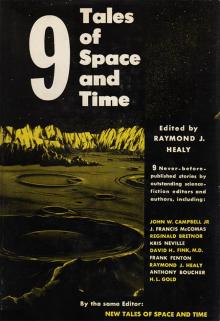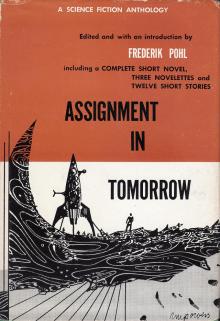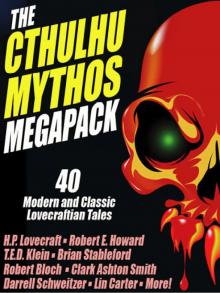The Cthulhu Mythos Megapack (40 Modern and Classic Lovecraftian Tales) Read online
Page 2
On the 7th of November, sight of the westward range having been temporarily lost, we passed Franklin Island; and the next day descried the cones of Mts. Erebus and Terror on Ross Island ahead, with the long line of the Parry Mountains beyond. There now stretched off to the east the low, white line of the great ice barrier, rising perpendicularly to a height of two hundred feet like the rocky cliffs of Quebec, and marking the end of southward navigation. In the afternoon we entered McMurdo Sound and stood off the coast in the lee of smoking Mt. Erebus. The scoriac peak towered up some twelve thousand, seven hundred feet against the eastern sky, like a Japanese print of the sacred Fujiyama, while beyond it rose the white, ghostlike height of Mt. Terror, ten thousand, nine hundred feet in altitude, and now extinct as a volcano.
Puffs of smoke from Erebus came intermittently, and one of the graduate assistants—a brilliant young fellow named Danforth—pointed out what looked like lava on the snowy slope, remarking that this mountain, discovered in 1840, had undoubtedly been the source of Poe’s image when he wrote seven years later:
—the lavas that restlessly roll
Their sulphurous currents down Yaanek
In the ultimate climes of the pole—
That groan as they roll down Mount Yaanek
In the realms of the boreal pole.
Danforth was a great reader of bizarre material, and had talked a good deal of Poe. I was interested myself because of the Antarctic scene of Poe’s only long story—the disturbing and enigmatical Arthur Gordon Pym. On the barren shore, and on the lofty ice barrier in the background, myriads of grotesque penguins squawked and flapped their fins, while many fat seals were visible on the water, swimming or sprawling across large cakes of slowly drifting ice.
Using small boats, we effected a difficult landing on Ross Island shortly after midnight on the morning of the 9th, carrying a line of cable from each of the ships and preparing to unload supplies by means of a breeches-buoy arrangement. Our sensations on first treading Antarctic soil were poignant and complex, even though at this particular point the Scott and Shackleton expeditions had preceded us. Our camp on the frozen shore below the volcano’s slope was only a provisional one, headquarters being kept aboard the Arkham. We landed all our drilling apparatus, dogs, sledges, tents, provisions, gasoline tanks, experimental ice-melting outfit, cameras, both ordinary and aerial, aeroplane parts, and other accessories, including three small portable wireless outfits—besides those in the planes—capable of communicating with the Arkham’s large outfit from any part of the Antarctic continent that we would be likely to visit. The ship’s outfit, communicating with the outside world, was to convey press reports to the Arkham Advertiser’s powerful wireless station on Kingsport Head, Massachusetts. We hoped to complete our work during a single Antarctic summer; but if this proved impossible, we would winter on the Arkham, sending the Miskatonic north before the freezing of the ice for another summer’s supplies.
I need not repeat what the newspapers have already published about our early work: of our ascent of Mt. Erebus; our successful mineral borings at several points on Ross Island and the singular speed with which Pabodie’s apparatus accomplished them, even through solid rock layers; our provisional test of the small ice-melting equipment; our perilous ascent of the great barrier with sledges and supplies; and our final assembling of five huge aeroplanes at the camp atop the barrier. The health of our land party—twenty men and fifty-five Alaskan sledge dogs—was remarkable, though of course we had so far encountered no really destructive temperatures or windstorms. For the most part, the thermometer varied between zero and 20° or 25° above, and our experience with New England winters had accustomed us to rigors of this sort. The barrier camp was semi-permanent, and destined to be a storage cache for gasoline, provisions, dynamite, and other supplies.
Only four of our planes were needed to carry the actual exploring material, the fifth being left with a pilot and two men from the ships at the storage cache to form a means of reaching us from the Arkham in case all our exploring planes were lost. Later, when not using all the other planes for moving apparatus, we would employ one or two in a shuttle transportation service between this cache and another permanent base on the great plateau from six hundred to seven hundred miles southward, beyond Beardmore Glacier. Despite the almost unanimous accounts of appalling winds and tempests that pour down from the plateau, we determined to dispense with intermediate bases, taking our chances in the interest of economy and probable efficiency.
Wireless reports have spoken of the breathtaking, four-hour, nonstop flight of our squadron on November 21st over the lofty shelf ice, with vast peaks rising on the west, and the unfathomed silences echoing to the sound of our engines. Wind troubled us only moderately, and our radio compasses helped us through the one opaque fog we encountered. When the vast rise loomed ahead, between Latitudes 83° and 84°, we knew we had reached Beardmore Glacier, the largest valley glacier in the world, and that the frozen sea was now giving place to a frowning and mountainous coast line. At last we were truly entering the white, aeon-dead world of the ultimate south. Even as we realized it we saw the peak of Mt. Nansen in the eastern distance, towering up to its height of almost fifteen thousand feet.
The successful establishment of the southern base above the glacier in Latitude 86° 7’, East Longitude 174° 23’, and the phenomenally rapid and effective borings and blastings made at various points reached by our sledge trips and short aeroplane flights, are matters of history; as is the arduous and triumphant ascent of Mt. Nansen by Pabodie and two of the graduate students—Gedney and Carroll—on December 13-15. We were some eight thousand, five hundred feet above sea-level, and when experimental drillings revealed solid ground only twelve feet down through the snow and ice at certain points, we made considerable use of the small melting apparatus and sunk bores and performed dynamiting at many places where no previous explorer had ever thought of securing mineral specimens. The pre-Cambrian granites and beacon sandstones thus obtained confirmed our belief that this plateau was homogeneous, with the great bulk of the continent to the west, but somewhat different from the parts lying eastward below South America—which we then thought to form a separate and smaller continent divided from the larger one by a frozen junction of Ross and Weddell Seas, though Byrd has since disproved the hypothesis.
In certain of the sandstones, dynamited and chiseled after boring revealed their nature, we found some highly interesting fossil markings and fragments; notably ferns, seaweeds, trilobites, crinoids, and such mollusks as linguellae and gastropods—all of which seemed of real significance in connection with the region’s primordial history. There was also a queer triangular, striated marking, about a foot in greatest diameter, which Lake pieced together from three fragments of slate brought up from a deep-blasted aperture. These fragments came from a point to the westward, near the Queen Alexandra Range; and Lake, as a biologist, seemed to find their curious marking unusually puzzling and provocative, though to my geological eye it looked not unlike some of the ripple effects reasonably common in the sedimentary rocks. Since slate is no more than a metamorphic formation into which a sedimentary stratum is pressed, and since the pressure itself produces odd distorting effects on any markings which may exist, I saw no reason for extreme wonder over the striated depression.
On January 6th, 1931, Lake, Pabodie, Danforth, the other six students, and myself flew directly over the south pole in two of the great planes, being forced down once by a sudden high wind, which, fortunately, did not develop into a typical storm. This was, as the papers have stated, one of several observation flights, during others of which we tried to discern new topographical features in areas unreached by previous explorers. Our early flights were disappointing in this latter respect, though they afforded us some magnificent examples of the richly fantastic and deceptive mirages of the polar regions, of which our sea voyage had given us some brief foretastes. Distant mountains floated in the sky as enchanted cities, and often the whole
white world would dissolve into a gold, silver, and scarlet land of Dunsanian dreams and adventurous expectancy under the magic of the low midnight sun. On cloudy days we had considerable trouble in flying owing to the tendency of snowy earth and sky to merge into one mystical opalescent void with no visible horizon to mark the junction of the two.
At length we resolved to carry out our original plan of flying five hundred miles eastward with all four exploring planes and establishing a fresh sub-base at a point which would probably be on the smaller continental division, as we mistakenly conceived it. Geological specimens obtained there would be desirable for purposes of comparison. Our health so far had remained excellent—lime juice well offsetting the steady diet of tinned and salted food, and temperatures generally above zero enabling us to do without our thickest furs. It was now midsummer, and with haste and care we might be able to conclude work by March and avoid a tedious wintering through the long Antarctic night. Several savage windstorms had burst upon us from the west, but we had escaped damage through the skill of Atwood in devising rudimentary aeroplane shelters and windbreaks of heavy snow blocks, and reinforcing the principal camp buildings with snow. Our good luck and efficiency had indeed been almost uncanny.
The outside world knew, of course, of our program, and was told also of Lake’s strange and dogged insistence on a westward—or rather, northwestward—prospecting trip before our radical shift to the new base. It seems that he had pondered a great deal, and with alarmingly radical daring, over that triangular striated marking in the slate; reading into it certain contradictions in nature and geological period which whetted his curiosity to the utmost, and made him avid to sink more borings and blastings in the west-stretching formation to which the exhumed fragments evidently belonged. He was strangely convinced that the marking was the print of some bulky, unknown, and radically unclassifiable organism of considerably advanced evolution, notwithstanding that the rock which bore it was of so vastly ancient a date—Cambrian if not actually pre-Cambrian—as to preclude the probable existence not only of all highly evolved life, but of any life at all above the unicellular or at most the trilobite stage. These fragments, with their odd marking, must have been five hundred million to a thousand million years old.
II
Popular imagination, I judge, responded actively to our wireless bulletins of Lake’s start northwestward into regions never trodden by human foot or penetrated by human imagination, though we did not mention his wild hopes of revolutionizing the entire sciences of biology and geology. His preliminary sledging and boring journey of January 11th to 18th with Pabodie and five others—marred by the loss of two dogs in an upset when crossing one of the great pressure ridges in the ice—had brought up more and more of the Archaean slate; and even I was interested by the singular profusion of evident fossil markings in that unbelievably ancient stratum. These markings, however, were of very primitive life forms involving no great paradox except that any life forms should occur in rock as definitely pre-Cambrian as this seemed to be; hence I still failed to see the good sense of Lake’s demand for an interlude in our time-saving program—an interlude requiring the use of all four planes, many men, and the whole of the expedition’s mechanical apparatus. I did not, in the end, veto the plan, though I decided not to accompany the northwestward party despite Lake’s plea for my geological advice. While they were gone, I would remain at the base with Pabodie and five men and work out final plans for the eastward shift. In preparation for this transfer, one of the planes had begun to move up a good gasoline supply from McMurdo Sound; but this could wait temporarily. I kept with me one sledge and nine dogs, since it is unwise to be at any time without possible transportation in an utterly tenantless world of aeon-long death.
Lake’s sub-expedition into the unknown, as everyone will recall, sent out its own reports from the shortwave transmitters on the planes; these being simultaneously picked up by our apparatus at the southern base and by the Arkham at McMurdo Sound, whence they were relayed to the outside world on wave lengths up to fifty meters. The start was made January 22nd at 4 A.M., and the first wireless message we received came only two hours later, when Lake spoke of descending and starting a small-scale ice-melting and bore at a point some three hundred miles away from us. Six hours after that a second and very excited message told of the frantic, beaver-like work whereby a shallow shaft had been sunk and blasted, culminating in the discovery of slate fragments with several markings approximately like the one which had caused the original puzzlement.
Three hours later a brief bulletin announced the resumption of the flight in the teeth of a raw and piercing gale; and when I dispatched a message of protest against further hazards, Lake replied curtly that his new specimens made any hazard worth taking. I saw that his excitement had reached the point of mutiny, and that I could do nothing to check this headlong risk of the whole expedition’s success; but it was appalling to think of his plunging deeper and deeper into that treacherous and sinister white immensity of tempests and unfathomed mysteries which stretched off for some fifteen hundred miles to the half-known, half-suspected coast line of Queen Mary and Knox Lands.
Then, in about an hour and a half more, came that doubly excited message from Lake’s moving plane, which almost reversed my sentiments and made me wish I had accompanied the party:
“10:05 P.M. On the wing. After snowstorm, have spied mountain range ahead higher than any hitherto seen. May equal Himalayas, allowing for height of plateau. Probable Latitude 76° 15’, Longitude 113° 10’ E. Reaches far as can see to right and left. Suspicion of two smoking cones. All peaks black and bare of snow. Gale blowing off them impedes navigation.”
After that Pabodie, the men and I hung breathlessly over the receiver. Thought of this titanic mountain rampart seven hundred miles away inflamed our deepest sense of adventure; and we rejoiced that our expedition, if not ourselves personally, had been its discoverers. In half an hour Lake called us again:
“Moulton’s plane forced down on plateau in foothills, but nobody hurt and perhaps can repair. Shall transfer essentials to other three for return or further moves if necessary, but no more heavy plane travel needed just now. Mountains surpass anything in imagination. Am going up scouting in Carroll’s plane, with all weight out.
“You can’t imagine anything like this. Highest peaks must go over thirty-five thousand feet. Everest out of the running. Atwood to work out height with theodolite while Carroll and I go up. Probably wrong about cones, for formations look stratified. Possibly pre-Cambrian slate with other strata mixed in. Queer skyline effects—regular sections of cubes clinging to highest peaks. Whole thing marvelous in red-gold light of low sun. Like land of mystery in a dream or gateway to forbidden world of untrodden wonder. Wish you were here to study.”
Though it was technically sleeping time, not one of us listeners thought for a moment of retiring. It must have been a good deal the same at McMurdo Sound, where the supply cache and the Arkham were also getting the messages; for Captain Douglas gave out a call congratulating everybody on the important find, and Sherman, the cache operator, seconded his sentiments. We were sorry, of course, about the damaged aeroplane, but hoped it could be easily mended. Then, at 11 P.M., came another call from Lake:
“Up with Carroll over highest foothills. Don’t dare try really tall peaks in present weather, but shall later. Frightful work climbing, and hard going at this altitude, but worth it. Great range fairly solid, hence can’t get any glimpses beyond. Main summits exceed Himalayas, and very queer. Range looks like pre-Cambrian slate, with plain signs of many other upheaved strata. Was wrong about volcanism. Goes farther in either direction than we can see. Swept clear of snow above about twenty-one thousand feet.
“Odd formations on slopes of highest mountains. Great low square blocks with exactly vertical sides, and rectangular lines of low, vertical ramparts, like the old Asian castles clinging to steep mountains in Roerich’s paintings. Impressive from distance. Flew close to some, and
Carroll thought they were formed of smaller separate pieces, but that is probably weathering. Most edges crumbled and rounded off as if exposed to storms and climate changes for millions of years.
“Parts, especially upper parts, seem to be of lighter-colored rock than any visible strata on slopes proper, hence of evidently crystalline origin. Close flying shows many cave mouths, some unusually regular in outline, square or semicircular. You must come and investigate. Think I saw rampart squarely on top of one peak. Height seems about thirty thousand to thirty-five thousand feet. Am up twenty-one thousand, five hundred myself, in devilish, gnawing cold. Wind whistles and pipes through passes and in and out of caves, but no flying danger so far.”
From then on for another half hour Lake kept up a running fire of comment, and expressed his intention of climbing some of the peaks on foot. I replied that I would join him as soon as he could send a plane, and that Pabodie and I would work out the best gasoline plan—just where and how to concentrate our supply in view of the expedition’s altered character. Obviously, Lake’s boring operations, as well as his aeroplane activities, would require a great deal for the new base which he planned to establish at the foot of the mountains; and it was possible that the eastward flight might not be made, after all, this season. In connection with this business I called Captain Douglas and asked him to get as much as possible out of the ships and up the barrier with the single dog team we had left there. A direct route across the unknown region between Lake and McMurdo Sound was what we really ought to establish.
Lake called me later to say that he had decided to let the camp stay where Moulton’s plane had been forced down, and where repairs had already progressed somewhat. The ice sheet was very thin, with dark ground here and there visible, and he would sink some borings and blasts at that very point before making any sledge trips or climbing expeditions. He spoke of the ineffable majesty of the whole scene, and the queer state of his sensations at being in the lee of vast, silent pinnacles whose ranks shot up like a wall reaching the sky at the world’s rim. Atwood’s theodolite observations had placed the height of the five tallest peaks at from thirty thousand to thirty-four thousand feet. The windswept nature of the terrain clearly disturbed Lake, for it argued the occasional existence of prodigious gales, violent beyond anything we had so far encountered. His camp lay a little more than five miles from where the higher foothills rose abruptly. I could almost trace a note of subconscious alarm in his words—flashed across a glacial void of seven hundred miles—as he urged that we all hasten with the matter and get the strange, new region disposed of as soon as possible. He was about to rest now, after a continuous day’s work of almost unparalleled speed, strenuousness, and results.

![[What Might Have Been 02] Alternate Heroes Read online](http://i1.bookreadfree.com/27/what_might_have_been_02_alternate_heroes_preview.jpg) [What Might Have Been 02] Alternate Heroes
[What Might Have Been 02] Alternate Heroes![[What Might Have Been 01] Alternate Empires Read online](http://i1.bookreadfree.com/01/what_might_have_been_01_alternate_empires_preview.jpg) [What Might Have Been 01] Alternate Empires
[What Might Have Been 01] Alternate Empires SEDUCTIVE: A Contemporary Romance Anthology
SEDUCTIVE: A Contemporary Romance Anthology A Year of Love
A Year of Love Super Daddies: A Naughty Nerdy Romantic Comedy Anthology
Super Daddies: A Naughty Nerdy Romantic Comedy Anthology Mystical Xmas: Paranormal Romance Anthology Box Set
Mystical Xmas: Paranormal Romance Anthology Box Set![[What Might Have Been 04] Alternate Americas Read online](http://i1.bookreadfree.com/06/what_might_have_been_04_alternate_americas_preview.jpg) [What Might Have Been 04] Alternate Americas
[What Might Have Been 04] Alternate Americas 9 Tales of Space and Time
9 Tales of Space and Time Assignment in Tomorrow
Assignment in Tomorrow![[What Might Have Been 03] Alternate Wars Read online](http://i1.bookreadfree.com/i/03/16/what_might_have_been_03_alternate_wars_preview.jpg) [What Might Have Been 03] Alternate Wars
[What Might Have Been 03] Alternate Wars The Complete Dangerous Visions
The Complete Dangerous Visions The IF Reader of Science Fiction
The IF Reader of Science Fiction Holiday in the Heart
Holiday in the Heart Torquere Press Sips and Shots
Torquere Press Sips and Shots Possess: An Alpha Anthology
Possess: An Alpha Anthology Beyond Control
Beyond Control Bad Boys Under the Mistletoe: A Begging for Bad Boys Collection
Bad Boys Under the Mistletoe: A Begging for Bad Boys Collection Hugo Awards: The Short Stories (Volume 3)
Hugo Awards: The Short Stories (Volume 3) The Second IF Reader of Science Fiction
The Second IF Reader of Science Fiction Astounding Science Fiction Stories Vol 1
Astounding Science Fiction Stories Vol 1 What Happens Over Spring Break: A Short Story Anthology
What Happens Over Spring Break: A Short Story Anthology eSteampunk Vol. 01 No. 02
eSteampunk Vol. 01 No. 02 SHADOWRUN: Spells and Chrome (shadowrun)
SHADOWRUN: Spells and Chrome (shadowrun) Dark Tales
Dark Tales Getting Schooled (Craving #9)
Getting Schooled (Craving #9) The Hellfire Book of Beltane Volume One
The Hellfire Book of Beltane Volume One The Alpha's
The Alpha's The Future Is Short
The Future Is Short From the Heart: A Valentine's Day Anthology
From the Heart: A Valentine's Day Anthology Reckless: A Bad Boyz Anthology
Reckless: A Bad Boyz Anthology LOL #3 Romantic Comedy Anthology
LOL #3 Romantic Comedy Anthology A Christmas Seduction: A Regency Anthology
A Christmas Seduction: A Regency Anthology All a Cowboy Wants for Christmas
All a Cowboy Wants for Christmas Hugo Awards: The Short Stories (Volume 2)
Hugo Awards: The Short Stories (Volume 2) The Golden Age of Science Fiction Novels Vol 01
The Golden Age of Science Fiction Novels Vol 01 The Sirens of SaSS Anthology
The Sirens of SaSS Anthology Mistletoe & Kisses
Mistletoe & Kisses Explorers of Space
Explorers of Space Time Travel Omnibus Volume 2
Time Travel Omnibus Volume 2 Dead Science: A Zombie Anthology
Dead Science: A Zombie Anthology Beer Goggles Anthology
Beer Goggles Anthology Apexology: Horror
Apexology: Horror Heat Wave: A Summer Loving Anthology
Heat Wave: A Summer Loving Anthology Fall in Love
Fall in Love Love Under the Mistletoe
Love Under the Mistletoe Hook & Ladder 69: Eighteen Authors...One Sexy Firehouse.
Hook & Ladder 69: Eighteen Authors...One Sexy Firehouse. LOL #2 Romantic Comedy Anthology - Volume 2 - Even More All-New Romance Stories by Bestselling Authors (LOL Romantic Comedy Anthology #2)
LOL #2 Romantic Comedy Anthology - Volume 2 - Even More All-New Romance Stories by Bestselling Authors (LOL Romantic Comedy Anthology #2) Off the Beaten Path: Eight Tales of the Paranormal
Off the Beaten Path: Eight Tales of the Paranormal![Best New Zombie [3] - Best New Zombie Tales, Vol. 3 Read online](http://i1.bookreadfree.com/i/03/25/best_new_zombie_3_-_best_new_zombie_tales_vol_3_preview.jpg) Best New Zombie [3] - Best New Zombie Tales, Vol. 3
Best New Zombie [3] - Best New Zombie Tales, Vol. 3 The Golden Age of Science Fiction Novels Vol 05
The Golden Age of Science Fiction Novels Vol 05 Alphas of Sin
Alphas of Sin Halloween Spirits: 11 Tales for the Darkest Night
Halloween Spirits: 11 Tales for the Darkest Night Night Shift 2
Night Shift 2 Ellora's Cavemen: Jewels of the Nile II
Ellora's Cavemen: Jewels of the Nile II Hot for the Holidays (21 Holiday Short Stories): A Collection of Naughty and Nice Holiday Romances
Hot for the Holidays (21 Holiday Short Stories): A Collection of Naughty and Nice Holiday Romances Of Heaven and Hell
Of Heaven and Hell 12 Christmas Romances To Melt Your Heart
12 Christmas Romances To Melt Your Heart '90s Playlist (Romance Rewind #1)
'90s Playlist (Romance Rewind #1) Bleed Blue 69: Twenty-Five Authors…One Sexy Police Station
Bleed Blue 69: Twenty-Five Authors…One Sexy Police Station The Cthulhu Mythos Megapack (40 Modern and Classic Lovecraftian Tales)
The Cthulhu Mythos Megapack (40 Modern and Classic Lovecraftian Tales) Nova 3
Nova 3 Unbroken: 13 Stories Starring Disabled Teens
Unbroken: 13 Stories Starring Disabled Teens Dead Men (and Women) Walking
Dead Men (and Women) Walking Sweet Seduction
Sweet Seduction Brothel: The Magnolia Diaries
Brothel: The Magnolia Diaries Rogues (A Boys Behaving Badly Anthology #1)
Rogues (A Boys Behaving Badly Anthology #1) Best New Zombie Tales, Vol. 3
Best New Zombie Tales, Vol. 3![The Hellfire Bo [1] - The Hellfire Book of Beltane Volume One Read online](http://i1.bookreadfree.com/i1/04/06/the_hellfire_bo_1_-_the_hellfire_book_of_beltane_volume_one_preview.jpg) The Hellfire Bo [1] - The Hellfire Book of Beltane Volume One
The Hellfire Bo [1] - The Hellfire Book of Beltane Volume One Horror in Paradise
Horror in Paradise Time Travel Omnibus Volume 1
Time Travel Omnibus Volume 1 More Than Words: Stories of Courage
More Than Words: Stories of Courage River Walk: Ten Kinky Collaborations
River Walk: Ten Kinky Collaborations F*cking Awkward
F*cking Awkward Hearts of England
Hearts of England The Golden Age of Science Fiction Novels Vol 03
The Golden Age of Science Fiction Novels Vol 03 Drunk in Love
Drunk in Love Up and Coming: Stories by the 2016 Campbell-Eligible Authors
Up and Coming: Stories by the 2016 Campbell-Eligible Authors Descended from Darkness: Apex Magazine Vol I
Descended from Darkness: Apex Magazine Vol I Dominant Persuasions Anthology: 12 Tales of D/s, Where Mastery Meets Passion
Dominant Persuasions Anthology: 12 Tales of D/s, Where Mastery Meets Passion The Golden Age of Science Fiction Novels Vol 04
The Golden Age of Science Fiction Novels Vol 04 Passion in Portland 2016 Anthology
Passion in Portland 2016 Anthology Men of Mayhem
Men of Mayhem The Dirty Anthology
The Dirty Anthology Hot For Teacher
Hot For Teacher Nova 2
Nova 2 eSteampunk Vol. 01 No. 03
eSteampunk Vol. 01 No. 03 Afternoon Tea Mysteries Vol Three
Afternoon Tea Mysteries Vol Three Romance in the Rain
Romance in the Rain Tales From the Crossroad Volume 1
Tales From the Crossroad Volume 1 A Very Alpha Christmas
A Very Alpha Christmas Nova 1
Nova 1 Once: A Collection of Sinfully Sexy and Twisted Tales
Once: A Collection of Sinfully Sexy and Twisted Tales Nuts About You: A Testicular Cancer Anthology
Nuts About You: A Testicular Cancer Anthology From the Street (shadowrun stories)
From the Street (shadowrun stories) Box of 1Night Stands: 21 Sizzling Nights
Box of 1Night Stands: 21 Sizzling Nights Descended from Darkness: Vol II
Descended from Darkness: Vol II Pink Shades of Words: Walk 2016
Pink Shades of Words: Walk 2016 The Art of Taking Chances
The Art of Taking Chances The Butterfly Box_A SASS Anthology
The Butterfly Box_A SASS Anthology Harlan County Horrors
Harlan County Horrors![Afternoon Tea Mysteries [Vol Three] Read online](http://i1.bookreadfree.com/i2/04/12/afternoon_tea_mysteries_vol_three_preview.jpg) Afternoon Tea Mysteries [Vol Three]
Afternoon Tea Mysteries [Vol Three] The Golden Age of Science Fiction Novels Vol 02
The Golden Age of Science Fiction Novels Vol 02 Ellora's Cavemen: Jewels of the Nile III
Ellora's Cavemen: Jewels of the Nile III